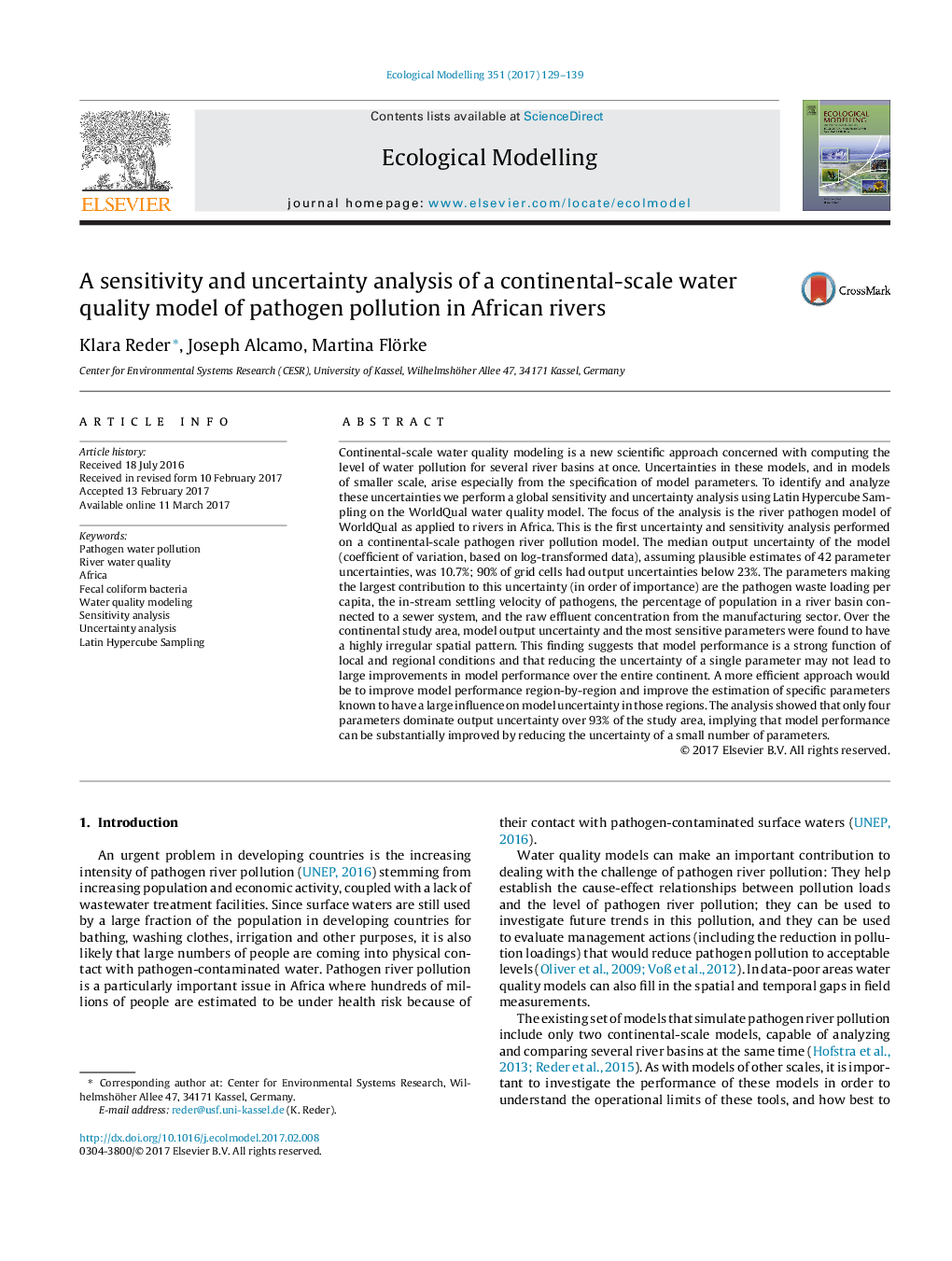| Article ID | Journal | Published Year | Pages | File Type |
|---|---|---|---|---|
| 5742225 | Ecological Modelling | 2017 | 11 Pages |
â¢The study performs a global sensitivity and uncertainty analysis.â¢The model is a continental-scale pathogen in-stream water quality model.â¢The study is performed for Africa.â¢Most sensitive were human load, settling velocity, pop. connected to a sewer system and manufacturing concentration.â¢The location of uncertainty and sensitive parameters had a highly irregular spatial pattern.
Continental-scale water quality modeling is a new scientific approach concerned with computing the level of water pollution for several river basins at once. Uncertainties in these models, and in models of smaller scale, arise especially from the specification of model parameters. To identify and analyze these uncertainties we perform a global sensitivity and uncertainty analysis using Latin Hypercube Sampling on the WorldQual water quality model. The focus of the analysis is the river pathogen model of WorldQual as applied to rivers in Africa. This is the first uncertainty and sensitivity analysis performed on a continental-scale pathogen river pollution model. The median output uncertainty of the model (coefficient of variation, based on log-transformed data), assuming plausible estimates of 42 parameter uncertainties, was 10.7%; 90% of grid cells had output uncertainties below 23%. The parameters making the largest contribution to this uncertainty (in order of importance) are the pathogen waste loading per capita, the in-stream settling velocity of pathogens, the percentage of population in a river basin connected to a sewer system, and the raw effluent concentration from the manufacturing sector. Over the continental study area, model output uncertainty and the most sensitive parameters were found to have a highly irregular spatial pattern. This finding suggests that model performance is a strong function of local and regional conditions and that reducing the uncertainty of a single parameter may not lead to large improvements in model performance over the entire continent. A more efficient approach would be to improve model performance region-by-region and improve the estimation of specific parameters known to have a large influence on model uncertainty in those regions. The analysis showed that only four parameters dominate output uncertainty over 93% of the study area, implying that model performance can be substantially improved by reducing the uncertainty of a small number of parameters.
